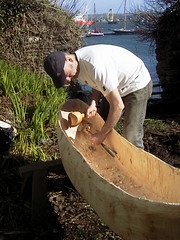Wouldn't it be nice to have a map of all land and territorial waters within the jurisdiction of English law, showing all the different areas of nature designations?
No such luck - however, if you go to
First, let's establish who is supposed to do what in England and Wales.
The
The
So what is a Designated Area?
Start your study with the
The key focus of the BAP's is to ensure that species and habitats are preserved. As an example look at this, which specifies the situation so far as maerl is concerned.
The JNCC have a useful resource
Make sure you know about the following - Marine Nature Reserves, No Take Zones, Special Areas of Conservation, Special Protected Areas, Areas of Outstanding Natural Beauty, Volunatry Marine conservation Areas, World Heritage Sites, Ramsar Sites, Fisheries Closed Areas, Fisheries Boxes, MCA Exclusion Zones, MCA Protected Place, MCA Controlled Sites, MCA Monument Sites, Oil and Gas Safety Zones, Wind Energy Exclusion Zone, Military Exclusion Zone and Marine Environment High Risk Areas. These designated areas are what we have a the moment.
SAC's are supposed to be an important management tool - however, note the crit by the Cornwall Wildlife Trusts
Under OSPAR (see below) the UK is obliged to develop a series of Marine Protected Areas - ie Nationally Important Marine Sites, and Highly Protected Marine Reserves.
For wwf publications, see here
I particualrly recommend this wwf publication on Marine Protected Areas (MPA). Here you will see that the IUCN has defined an MPA as "any area of intertidal or subtidal terrain, together with its overlying water and associated flora, fauna, historical and cultural features, which has been reserved by law or other effective means to protect part or all of the enclosed einvironment." Note that MPA's extend to historical and cultural features, though the main thrust is the conservation of biodiversity.
Worldwide, MPA's are generally situated in territorial waters, but some are in EEZ's. The legal situation regarding MPA's on the High Seas is not clear, though this might help.
Currently, the CBD calls for a network of MPA's to be established by 2012 worldwide; OSPAR calls for an ecologically coherent network of well managed marine protected areas by 2010; and DEFRA are making proposals for MPA's to be established as part of the Marine Bill proposals.
Note that there are already a significant number of MPA's established by the Habitats Directive, ie SAC's which form part of the Natura 2000 network.
And don't let the designation MNR (Marine Nature Reserve) confuse you. This category of MPA was set up by the 1981 Wildlife and Countryside Act - to date only 3 have been introduced in the UK.
There are also de facto MPA's, such as safety zones around oil rigs for instance.

